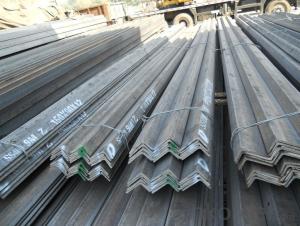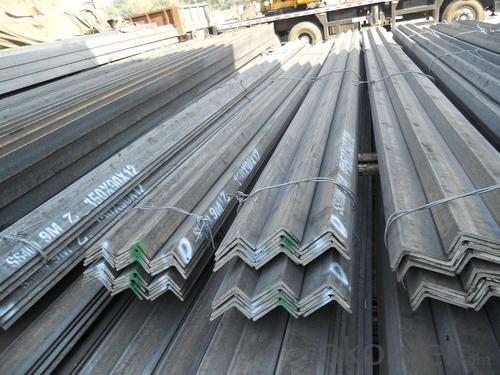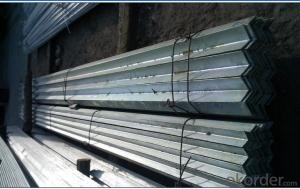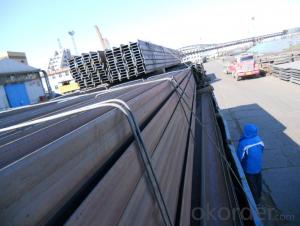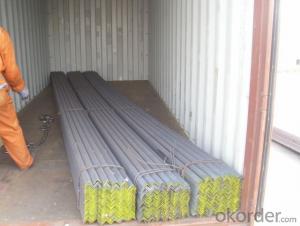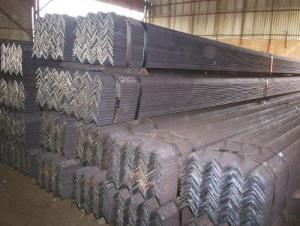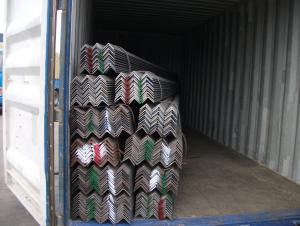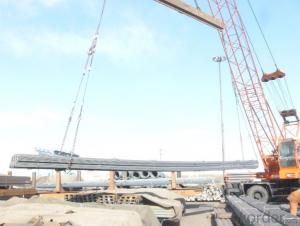High Quality cold Rolled Steel Equal Angle for Construction
- Loading Port:
- China main port
- Payment Terms:
- TT OR LC
- Min Order Qty:
- 25000 m.t.
- Supply Capability:
- 2000000 m.t./month
OKorder Service Pledge
OKorder Financial Service
You Might Also Like
Specification
Product Description:
OKorder is offeringHigh Quality cold Rolled Steel Equal Angle for Construction at great prices with worldwide shipping. Our supplier is a world-class manufacturer of steel, with our products utilized the world over. OKorder annually supplies products to European, North American and Asian markets. We provide quotations within 24 hours of receiving an inquiry and guarantee competitive prices.
Product Applications:
High Quality cold Rolled Steel Equal Angle for Construction are ideal for structural applications and are widely used in the construction of buildings and bridges, and the manufacturing, petrochemical, and transportation industries.
Product Advantages:
OKorder's High Quality cold Rolled Steel Equal Angle for Construction are durable, strong, and resist corrosion. They are newly produeced by good materiales.
Main Product Features:
· Premium quality
· Prompt delivery & seaworthy packing (30 days after receiving deposit)
· Corrosion resistance
· Can be recycled and reused
· Mill test certification
· Professional Service
· Competitive pricing
Product Specifications:
Specifications of High Quality cold Rolled Steel Equal Angle for Construction
1. Invoicing on theoretical weight or actual weight as customer request
2. Length: 6m, 9m, 12m as following table
3. Sizes

Sizes: 25mm-250mm | ||
a*t | ||
25*2.5-4.0 | 70*6.0-9.0 | 130*9.0-15 |
30*2.5-6.6 | 75*6.0-9.0 | 140*10-14 |
36*3.0-5.0 | 80*5.0-10 | 150*10-20 |
38*2.3-6.0 | 90*7.0-10 | 160*10-16 |
40*3.0-5.0 | 100*6.0-12 | 175*12-15 |
45*4.0-6.0 | 110*8.0-10 | 180*12-18 |
50*4.0-6.0 | 120*6.0-15 | 200*14-25 |
60*4.0-8.0 | 125*8.0-14 | 250*25 |
5. Payment terms:
1).100% irrevocable L/C at sight.
2).30% T/T prepaid and the balance against the copy of B/L.
3).30% T/T prepaid and the balance against L/C
6.Material details:
Alloy No | Grade | Element (%) | |||||
C | Mn | S | P | Si | |||
Q235 | B | 0.12—0.20 | 0.3—0.7 | ≤0.045 | ≤0.045 | ≤0.3 | |
Alloy No | Grade | Yielding strength point( Mpa) | |||||
Thickness (mm) | |||||||
≤16 | >16--40 | >40--60 | >60--100 | ||||
≥ | |||||||
Q235 | B | 235 | 225 | 215 | 205 | ||
Alloy No | Grade | Tensile strength (Mpa) | Elongation after fracture (%) | ||||
Thickness (mm) | |||||||
≤16 | >16--40 | >40--60 | >60--100 | ||||
≥ | |||||||
Q235 | B | 375--500 | 26 | 25 | 24 | 23 | |
Usage & Applications of High Quality cold Rolled Steel Equal Angle for Construction
According to the needs of different structures, Angle can compose to different force support component, and also can be the connections between components. It is widely used in various building structures and engineering structures such as roof beams, bridges, transmission towers, hoisting machinery and transport machinery, ships, industrial furnaces, reaction tower, container frame and warehouse etc.
Packaging & Delivery ofHigh Quality cold Rolled Steel Equal Angle for Construction
1. Packing: it is nude packed in bundles by steel wire rod
2. Bundle weight: not more than 3.5MT for bulk vessel; less than 3 MT for container load
3. Marks:
Color marking: There will be color marking on both end of the bundle for the cargo delivered by bulk vessel. That makes it easily to distinguish at the destination port.
Tag mark: there will be tag mark tied up on the bundles. The information usually including supplier logo and name, product name, made in China, shipping marks and other information request by the customer.
If loading by container the marking is not needed, but we will prepare it as customer request.
Production flow of High Quality cold Rolled Steel Equal Angle for Construction
Material prepare (billet) —heat up—rough rolling—precision rolling—cooling—packing—storage and transportation
FAQ:
Q1: Why buy Materials & Equipment from OKorder.com?
A1: All products offered byOKorder.com are carefully selected from China's most reliable manufacturing enterprises. Through its ISO certifications, OKorder.com adheres to the highest standards and a commitment to supply chain safety and customer satisfaction.
Q2: How do we guarantee the quality of our products?
A2: We have established an advanced quality management system which conducts strict quality tests at every step, from raw materials to the final product. At the same time, we provide extensive follow-up service assurances as required.
Q3: How soon can we receive the product after purchase?
A3: Within three days of placing an order, we will begin production. The specific shipping date is dependent upon international and government factors, but is typically 7 to 10 workdays.
Images:
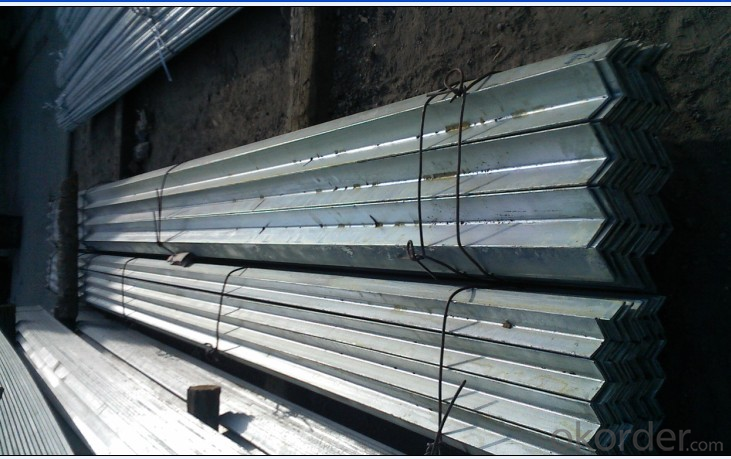
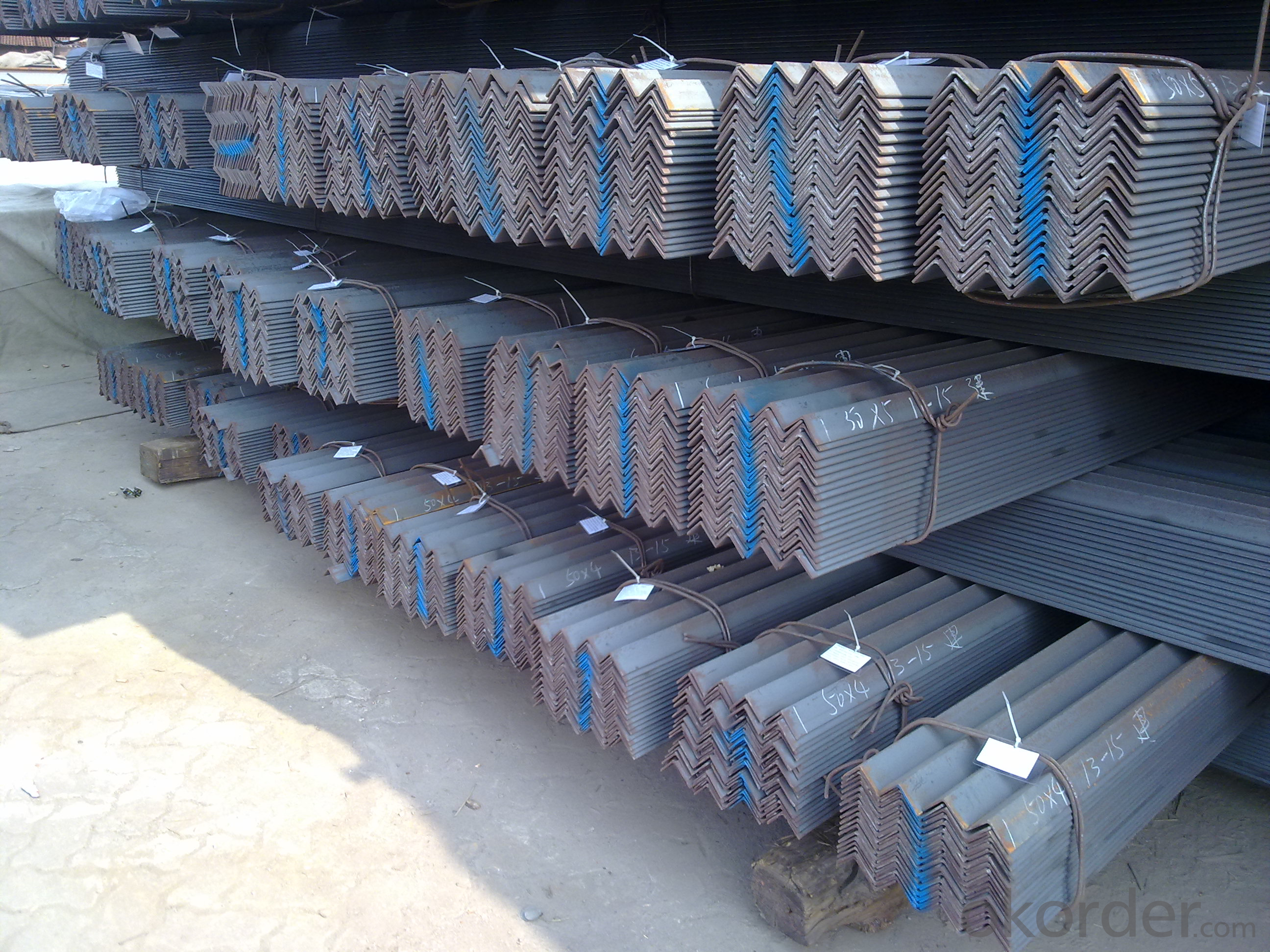
- Q: What are the different types of steel angles used in transmission line towers?
- There are typically three types of steel angles used in transmission line towers: equal leg angles, unequal leg angles, and back-to-back angles. Equal leg angles have equal dimensions on both sides, while unequal leg angles have different dimensions on each side. Back-to-back angles consist of two equal leg angles joined back-to-back to form a single unit. These different types of angles allow for flexibility and strength in designing and constructing transmission line towers.
- Q: What is the difference between mill finish and hot-dip galvanized steel angles?
- Mill finish and hot-dip galvanized steel angles are two different types of steel finishes that have distinct characteristics and applications. Mill finish refers to the surface finish of steel angles straight from the mill, without any additional coatings or treatments. It has a dull, matte appearance and may have slight imperfections such as small scratches or marks. Mill finish steel angles are typically used in structural applications where aesthetics are not a priority, such as in construction projects or industrial settings. They are also commonly used as structural support in buildings, bridges, and machinery. On the other hand, hot-dip galvanized steel angles undergo a process called hot-dip galvanizing. This involves immersing the steel angles in a bath of molten zinc, which creates a protective coating on the surface. The zinc coating provides excellent corrosion resistance, making hot-dip galvanized steel angles suitable for outdoor applications or environments where the angles may be exposed to moisture, chemicals, or harsh weather conditions. The galvanized coating also gives the steel angles a shiny, metallic appearance. In summary, the main difference between mill finish and hot-dip galvanized steel angles lies in their surface finishes and corrosion resistance properties. Mill finish steel angles have a dull appearance and are used primarily for structural purposes, while hot-dip galvanized steel angles have a shiny appearance and offer superior corrosion protection, making them ideal for outdoor applications.
- Q: How are steel angles defined?
- Steel angles are defined based on the length of their legs, thickness, and their shape, which is typically L-shaped. These angles are commonly used in construction and engineering applications for structural support and framing purposes.
- Q: What is the typical ductility of steel angles?
- The typical ductility of steel angles varies depending on the specific grade of steel used and the manufacturing process. However, in general, steel angles are known to possess excellent ductility. Ductility refers to the ability of a material to deform under tensile stress without fracturing. Steel, including steel angles, is known for its high ductility, which allows it to be easily formed, bent, or twisted without breaking. This characteristic makes steel angles highly versatile and suitable for various applications, such as construction, engineering, and manufacturing.
- Q: Can steel angles be used for HVAC ductwork?
- No, steel angles are not typically used for HVAC ductwork. Ductwork is commonly made from galvanized steel sheets or flexible materials such as aluminum or fiberglass. Steel angles are more commonly used for structural support or framing purposes.
- Q: Can steel angles be used for shelving and storage racks?
- Yes, steel angles can be used for shelving and storage racks. Steel angles are commonly used in construction and industrial applications due to their strength and durability. They provide excellent support and stability, making them suitable for organizing and storing various items on shelves and racks.
- Q: What are the standard tolerances for steel angles?
- The standard tolerances for steel angles vary depending on the specific industry and application. However, in general, the standard tolerances for steel angles typically include dimensional tolerances such as length, width, and thickness, as well as straightness and twist tolerances. These tolerances ensure that the steel angles meet the required specifications and can be effectively used in various construction and manufacturing processes.
- Q: What is the maximum slope for a steel angle?
- The maximum slope for a steel angle depends on various factors such as the size, shape, and thickness of the angle. However, in general, steel angles are designed to withstand vertical loads and provide stability in structural applications. Therefore, the maximum slope for a steel angle is typically limited to angles less than 45 degrees. Going beyond this angle may compromise the structural integrity of the angle and increase the risk of failure. It is important to consult engineering codes, standards, and specifications to determine the specific maximum slope for a particular steel angle in a given application.
- Q: What are the common methods of surface cleaning for steel angles?
- The common methods of surface cleaning for steel angles include abrasive blasting, chemical cleaning, and mechanical cleaning. Abrasive blasting involves using high-pressure air or water to propel abrasive materials onto the surface of the steel angle, effectively removing rust, scale, and other contaminants. Chemical cleaning involves applying specialized cleaning agents or solvents to dissolve and remove dirt, grease, or oil from the surface. Mechanical cleaning involves physically scrubbing the surface using wire brushes or abrasive pads to remove any visible debris or contaminants.
- Q: Can steel angles be used in overhead crane or hoist systems?
- Yes, steel angles can be used in overhead crane or hoist systems. Steel angles are commonly used in the construction of crane runways, support structures, and trolley rails. They provide a strong and rigid framework for the crane or hoist system. Steel angles are known for their high strength-to-weight ratio, making them an ideal choice for heavy-duty applications. Additionally, steel angles can be easily welded or bolted together, allowing for easy installation and customization. Overall, steel angles are a reliable and cost-effective option for incorporating into overhead crane or hoist systems.
Send your message to us
High Quality cold Rolled Steel Equal Angle for Construction
- Loading Port:
- China main port
- Payment Terms:
- TT OR LC
- Min Order Qty:
- 25000 m.t.
- Supply Capability:
- 2000000 m.t./month
OKorder Service Pledge
OKorder Financial Service
Similar products
Hot products
Hot Searches
Related keywords
